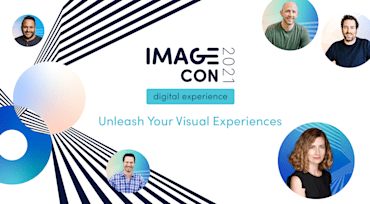Even before the COVID-19 pandemic, consumers had high expectations for digital experiences. They now expect nothing less than seamless, intuitive, and engaging experiences regardless of the channel or platform they are on. The Cloudinary product team is well aware that meeting those expectations has created new challenges for retailers and brands, especially those that relied on in-store sales before the pandemic. To understand the challenges so we can better solve them, we recently worked with Meet the Boss, a business-collaboration partner, to host three virtual roundtables with brand leaders.
In each session, a member of the Cloudinary product team joined marketers from EMEA for brainstorming. We asked participants how they had been leveraging visual-media assets to improve storytelling, build relationships, and drive sales. The challenges and success stories they described were fascinating. In the words of Cloudinary’s product marketing lead Prajanma Singh, who joined the Meet the Boss roundtable on June 25, it was “absolutely amazing” to see how quickly companies had adapted to the unprecedented circumstances and to hear about the creativity that was born.
Let’s take a look at eight common threads that emerged from the sessions.
1. We Are More Alike Than Different
Companies represented at our three Meet the Boss panels included a high-end U.K. fashion brand, a global department store, a food-and-beverage corporation, a gaming company, an Indian footwear leader, and a home-design company. Yet, despite differences in verticals, company size, and location, their marketers shared many identical experiences. Multiple panelists observed that it was comforting to hear that their peers had faced similar challenges and that they’d solved them in the same way.
2. Creating Immersive Online Experiences Is a Balancing Act
Many marketers leveraged bigger images and more videos to drive conversions and create online experiences that rival in-store shopping, but challenges abounded. More media can compromise site performance, and consumers will leave a site if a page is slow to load. Furthermore, Google now factors page performance into SEO ranking, penalizing sites for slow-loading pages. Our Cloudinary teammates explained how Cloudinary automotes media optimization for faster performance, enabling brands to deliver outstanding visual experiences without sacrificing load time.
3. In-House Content Production Benefits From DAM (Digital Asset Management) Solutions
During the pandemic, companies needed more content than ever before. Creating it was challenging, especially during lockdowns when it was impossible to get teams in the same room for photo shoots. Even though several organizations, including a gaming company, a fashion retailer, and a leading food-and-beverage corporation, built in-house content studios, they still needed to rely on production partners. Counting on multiple content sources, however, often led to long lead times and process inefficiencies.
Notably, at one of the sessions, Ran Rubinstein, Cloudinary’s VP of solutions, pointed out that many companies are struggling to streamline the “visual-media supply chain.” In fact, more and more organizations are turning to a centralized, cloud-based Digital Asset Management (DAM) platform to boost agility, simplify processes, and improve media quality.
4. New Restraints Breed Unbridled Creativity
Without exception, our panel marketers were proud of the way in which their teams had solved tough problems during the pandemic. A few unearthed cost-effective strategies that they might not have tried otherwise. For example:
- A gaming company discovered the power of repurposing TikTok videos for different platforms.
- A shoe company connected with customers in new ways, including WhatsApp, and, by creating “stores on wheels,” mobile kiosks that offered virtual visits to apartment complexes.
- The CMO at a sports-equipment company remarked that constraints led to the brand’s most authentic and creative storytelling ever.
- During the June 14 session, Yehuda Kossowsky, Cloudinary’s senior director of product, emphasized that Cloudinary clients are adopting new techniques, including 360-degree product viewers and wide-gamut color to heighten color accuracy.
5. Read the “Room”: Consumers Wanted Authenticity, Not Glitz and Glamour
The head of content at a European home-improvement company said that her team focused on intimate scenes instead of glossy and glamorous shots. “We celebrated the every day instead of selling a dream,” she explained. A department-store corporation focused on communicating the steps it was taking to keep associates and consumers safe during COVID-19. Consequently, customers responded positively on social media, and the brand’s reputation scores have never been higher. The head of e-business at a food-and-beverage company’s Eastern & Southern Africa region concentrated on differentiating products, adding context, and showing products in use. Such an approach required retailer education since not every retailer understood the benefits of lifestyle photos versus product shots.
6. Social Feeds and User-Generated Content Play a Bigger Role in Brand Strategy
This year, more companies have added social feeds to their websites and encouraged consumers to upload images and videos in addition to posting reviews. However, as much as user-generated content (UGC) helps brands earn credibility and conveys authenticity, it also poses risks and challenges. Brands need processes and tools for moderating content, editing content assets at scale, and tagging metadata. A number of brands started shooting images specifically for social channels rather than repurposing assets, as they had done in the past. Stories and partnerships with micro influencers were especially important and compelling. For a fashion company, the top-performing videos were the ones that took customers behind the scenes to see the stores and employees they had been missing.
7. It’s a Time to Turn to Tech
Companies of all sizes are using technology to streamline and improve processes. A case in point: CGI helped a home-decor company fill in the gaps when supply-chain issues made it impossible to shoot products in the studio. Other tactics included adopting new digital workflows and managing media more effectively with AI.
Of note is that Cloudinary offers AI-powered tools that make it easy to create media versions for shops, marketplaces, websites, and apps.
8. Online Can Be Better
The head of client marketing at an e-commerce company made a great point: Shopping online can be just as good or even better than shopping in store. As an example, Ben & Jerry’s delivered a superb user experience with photos that “slice” through a pint of ice cream to show shoppers what’s inside, bringing the product to life in a way that’s impossible to do in person.
We are amazed by all the clever and phenomenal online shopping experiences the brands have created, and we appreciate their joining our Meet the Boss sessions. For more information on Cloudinary, please contact us.





